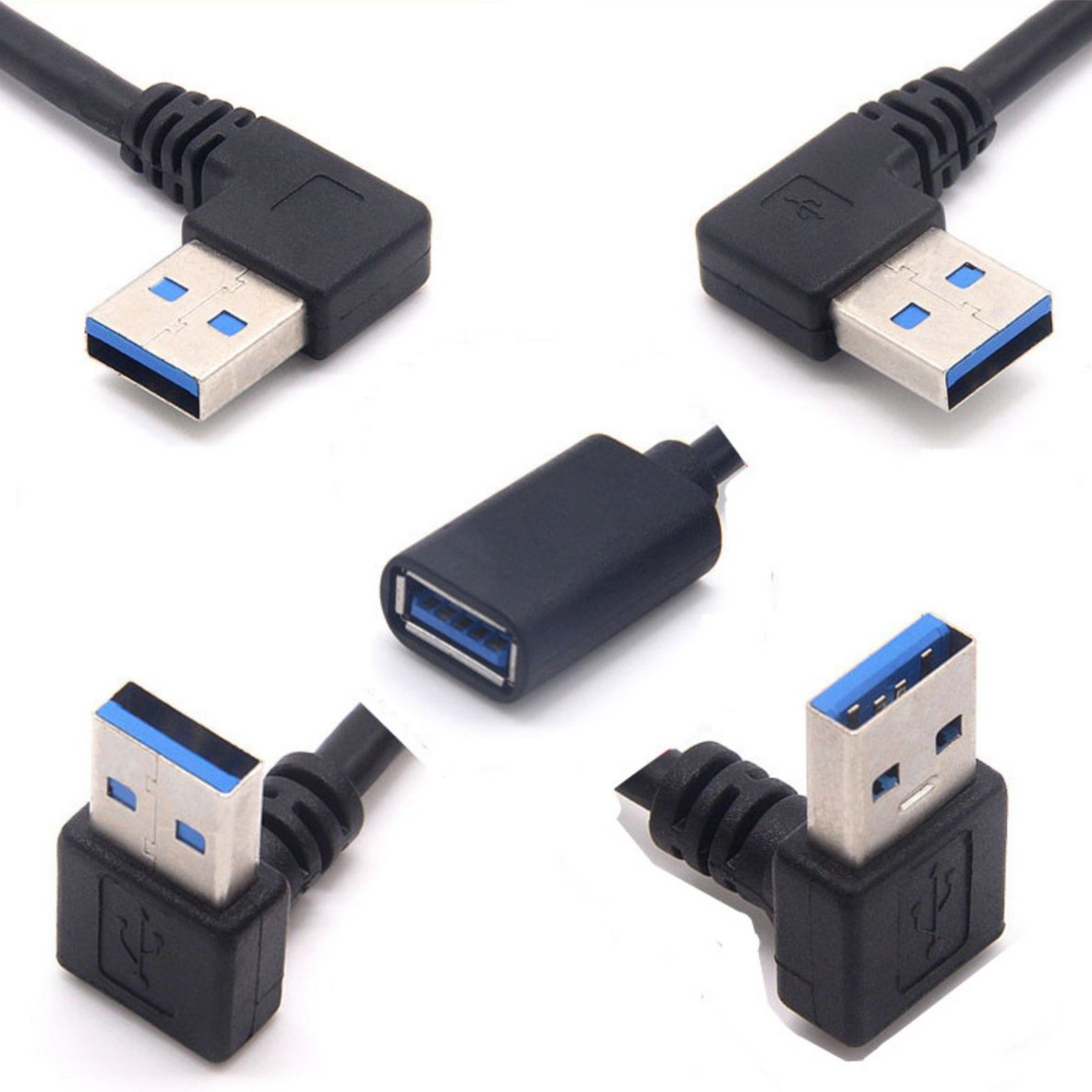One of the most frequent enquiries we receive from customers relates to angled connectors and their definitions. We understand that there is a lot of confusion pertaining to these and hope we can take some strides in clearing it all up for you!
You can see across our website we sell USB, HDMI, DisplayPort and all kinds of cables in different angles. Some are referred to as right angled, some left angled, some down, others up and so on!
Angled connectors are useful when you have a tight space to connect into, or when you wish to save stress on your cables and ports. But choosing the correct direction is crucial - or else you might end up plugging it in to find the cable points the complete wrong direction!
So what does it all mean?
Over the years we have found that different people may define the angles differently, depending on their viewpoint of the cable, or position of the entry port. But there is in fact a 'largely' universal definition of each cable angle. We will demonstrate this point with a USB-Mini cable as it is much clearer to see as indicated in the picture below.

Essentially, most connectors, whether it be USB-Mini, USB-Micro, HDMI or DisplayPort are not symmetrical and there is a narrower edge on one side. There are of course exceptions such as USB-A or USB-C, but to keep this simple we will initially focus on the non-symmetrical types.
Right and Left angled cables are basically defined by the direction in which you insert the cable into your device. If you imagine for example, that you have a Laptop in front of you with a USB-Mini port on the left hand side of it - you would need a RIGHT angled cable (as the Mini ports narrowest part would be at the bottom). If the port was on the other side you would need a LEFT angled cable.
Up and Down angled cables are defined by the direction the cable points once connected. If we take our example above again, and imagine you want you cable to point UPWARDS from the device, the you would choose an UP angled cable, if you wanted it to point DOWNWARDS then you would choose a DOWN angled cable.
This simple rule can be applied to almost all non-symmetrical cables, including USB Micro, HDMI and so on. So sometimes if you have a HDMI port in your TV that is sideways on, you would need to consider the angle you needed based on this. Sometimes to point downwards, you might need a RIGHT angled HDMI. In most cases however, the HDMI points are horizontally positioned with the narrow part at the bottom (just as with the USB-Mini example).
So what about symmetrical connectors?
Well to start with, USB-C and Lightning connectors are reversible. So you only need to choose between three possibilities (straight, right/left or up/down).
USB-A on the other hand, you need to look at the position of the pin bed. The picture below shows a USB-A 3.0 cable and the pin bed (blue section) is positioned differently for each angle type.

Moving clockwise around the picture, the top left connector is LEFT angled. So if you are plugging into the RIGHT side of your laptop this is what you would need. The next one is a RIGHT angle. The bottom right connector is a DOWN angle, and the final one in the left lower corner is an UP angle.
Occasionally there are devices that may break the rule, if for example the ports are vertical (such as those on an iMac) or if they are in other strange positions. The best way to be sure is to double check where the pins need to connect, and if course if you still have any doubts at all - please contact us and we will be happy to assist you!
In the meantime, I hope you found this article useful!
